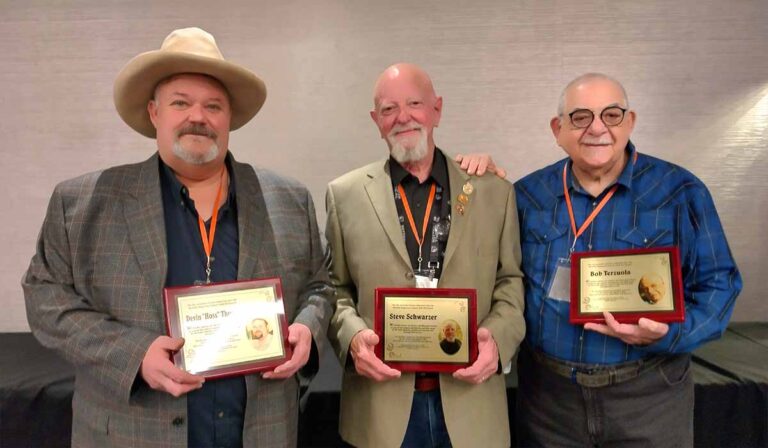
Cutlery Hall Of Fame ushers in a Hall Of Fame class at the 2023 BLADE Show.
There was much joy tempered by a tear or three as Devin Thomas, Bob Terzuola and Steve Schwarzer took monumental steps in their monumental knife careers with their formal inductions into the BLADE Magazine Cutlery Hall Of Fame® during BLADE Show ’23.
Celebrated with a combination breakfast/induction ceremony, the new inductees were saluted by an appreciative crowd of just over 100 that included family, friends, sitting Hall-Of-Famers, world-renowned knifemakers, knife collectors and various combinations thereof in the Kennesaw Room of the show’s host hotel, the Renaissance Waverly.
Providing induction speeches were those handpicked by the new inductees: Cutlery Hall-Of-Famers Bill Ruple and Ken Onion for Thomas and Terzuola, respectively, and award-winning bladesmith Neil Kamimura for Schwarzer. All, including the acceptance speeches, were genuine, entertaining and memorable.
Devin Thomas
While best known for his damascus steel, Devin’s first love was making knives. “The best kept secret about Devin is how good a knifemaker he is,” Bill Ruple said. “He’s known for his wonderful damascus steel, some of the best in the world, but he’s a heckuva knifemaker.”
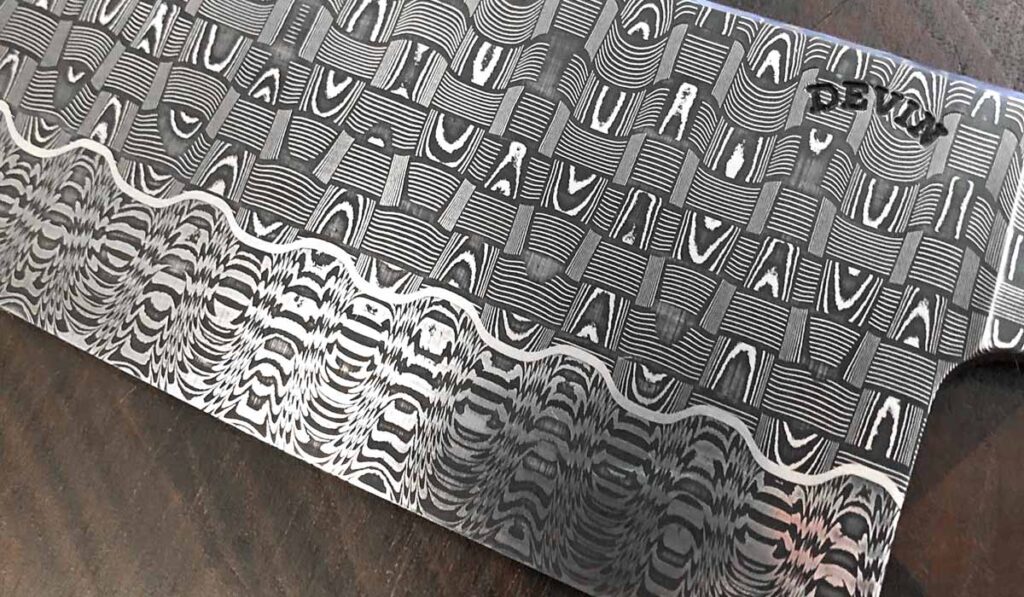
Using a set of instructions his uncle gave him, Devin made his first knife at 13. At 16 he worked the whole summer making knives with long-time maker Bob Lofgren in Arizona. Devin did so without pay but didn’t care because of his affinity for knives. At 18 he won most impressive knife by a new maker at the California Custom Knife Show. At 21 he married Jackie. “She knew me in high school and knew I made knives, so when we got married she knew about the knife thing, so I didn’t surprise her or anything,” he recalled. “And I told her at the time I’m going to be a world famous knifemaker one day.” Devin and Jackie recently celebrated their 37th anniversary.
One of Devin’s inspirations was Cutlery Hall-Of-Famer Wayne Goddard. Devin read Wayne’s story on cable damascus in KNIVES ’86 and a career was born. “I thought I could forge-weld cable damascus, so I bought me some cable. I didn’t have any idea what I was doing, and I heated up the forge and got [the cable] to stick together,” Devin said. “That started my damascus career.”
His next great inspiration was Cutlery Hall-Of-Famer Buster Warenski. “I kept trying to get him to try some of my steel,” Devin related. “Buster said, ‘I’m not trying any of your steel unless you try to make stainless damascus.’ I started making stainless damascus and Buster used a piece in one of his art pieces and I thought, ‘I can quit today!’”
On the contrary, Devin was on his way.
“At one time I think I was making more steel than the entire ABS put together, not certain, but I could really pump it out,” he said. “I was doing 50 bars of steel a day on a regular basis. That hammer was wide open all the time.”
Family, friends and customers—that’s what it’s all about for Devin. “My oldest son [Larrin] is developing new steel so fast the industry can’t keep up,” he noted. “He developed MagnaCut— which some like but a few don’t—but the industry can’t absorb his new developments fast enough.”
Better designs, better manufacturing, an upcoming generation of makers that has him very optimistic—Devin sees a rosy future for the industry.
“We have more talent than we’ve ever had before, and younger talent, and more excitement,” he opined. “We’ve got a lot of bad designs and bad knifemaking too, but we’ve got to tolerate the good and the bad. We need more domestic manufacturing and we need better abrasives—they’re not keeping up with the steel we’re producing. My only regret? I don’t know, maybe I shoulda bought a truckload of stag scales when they were only two or three dollars a pair.”
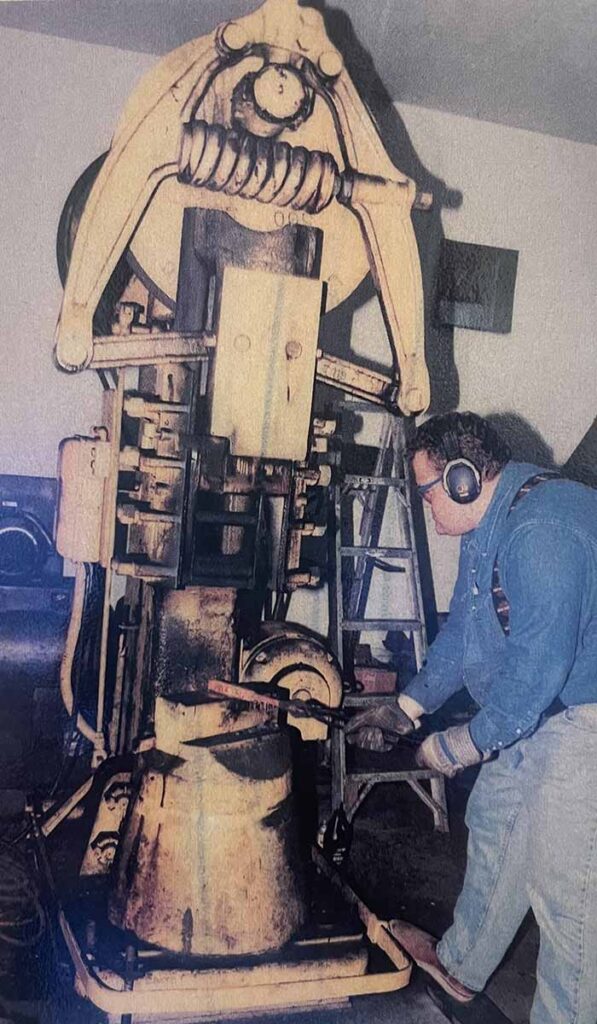
Ruple said he and Devin have a mutual respect based both on friendship and a shared desire to make the best the knife industry has to offer.
“Devin was always my go-to guy when it came to knowing anything about steel,” Bill said. “Anything I needed to know I’d call Devin. I learned a lot from the guy.”
Devin is nicknamed “Hoss” for his resemblance to the most endearing member of the Cartwright family on the long-running 1960s-’70s TV show, Bonanza. And, not unlike the TV Hoss, the new Hall-Of-Famer Hoss has never been beyond pulling a rabbit out of his 10-gallon hat. Bill recalled such a time at a long past BLADE Show.
“We were sitting at my table and this guy from Japan comes up and he’s trying to buy a knife from me and communication is not going well, and all of a sudden Devin’s talking Japanese to this guy and I’m thinking, ‘Hoss Cartwright speaks Japanese?’” Bill laughed at the memory.
Of course, the fact Devin is multilingual simply adds to his Hall-Of-Fame pedigree.
“Devin’s the guy who brought damascus steel to the masses,” Bill observed. “There were guys who made damascus steel but Devin aimed his steel at folder makers. He got it out there in dimensions that guys like me could use. There’s probably more of his steel in high-end collections around the world than anybody else’s. He’s been doing this a long time and he’s one of the best ever.”
Bob Terzuola
Bob Terzuola made his first knife in 1979, joined the Knifemakers’ Guild in 1981 and along the way served on the Guild’s board of directors for nine years. His relentless search for ways to improve his knives in terms of design, materials, mechanisms and more helped establish his place as one of the greatest knifemakers of his or any era, with his tactical folding knives at the summit.
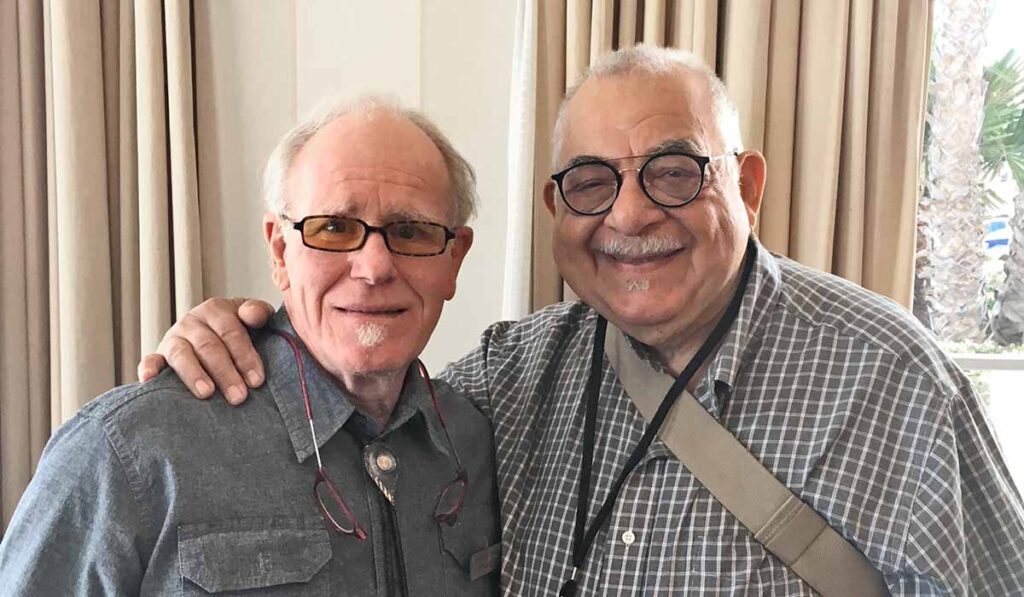
“In 1984 Bob moved to Santa Fe, New Mexico, and started making folding knives,” Ken Onion said. “Searching for a hard-use folder that could be used discreetly, Bob developed a model featuring Micarta® scales and bead-blasted titanium bolsters for which he coined the term tactical folding knife, which later evolved into his most popular model, the ATCF … which opened the market for the new category of folding knife, which arguably remains the largest and most popular category of knives in the industry.”
As Ken noted, Bob wanted to design a “robust knife as tough as he could,” so he set out to use G-10, carbon fiber, titanium and other advanced materials at a time when few if any were using them. He was a pioneer of the circular thumb disc for ambidextrous one-hand blade opening, multiple double grinds on folder blades, knives with laser-cut CNC parts and fine-tuned other areas that have molded the modern folding knife.
“Bob also focused a lot on the linerlock and did a lot of engineering advancements through a lot of trial and error, and then what does he do? He writes a book about it—The Tactical Folding Knife: A Study of the Anatomy and Construction of the Liner-Locked Folder—to teach the rest of us how to compete with him. How many of us have a copy of that book in their shop?” Ken asked the attentive audience. “How many have a dog-eared, highlighted copy, how many of us reference it regularly, and how many of us have read it more than once? It’s kind of like an important thing for all of us to have. All these contributions and advancements have earned him the affection of us all and title of the Godfather of the Tactical Knife.”
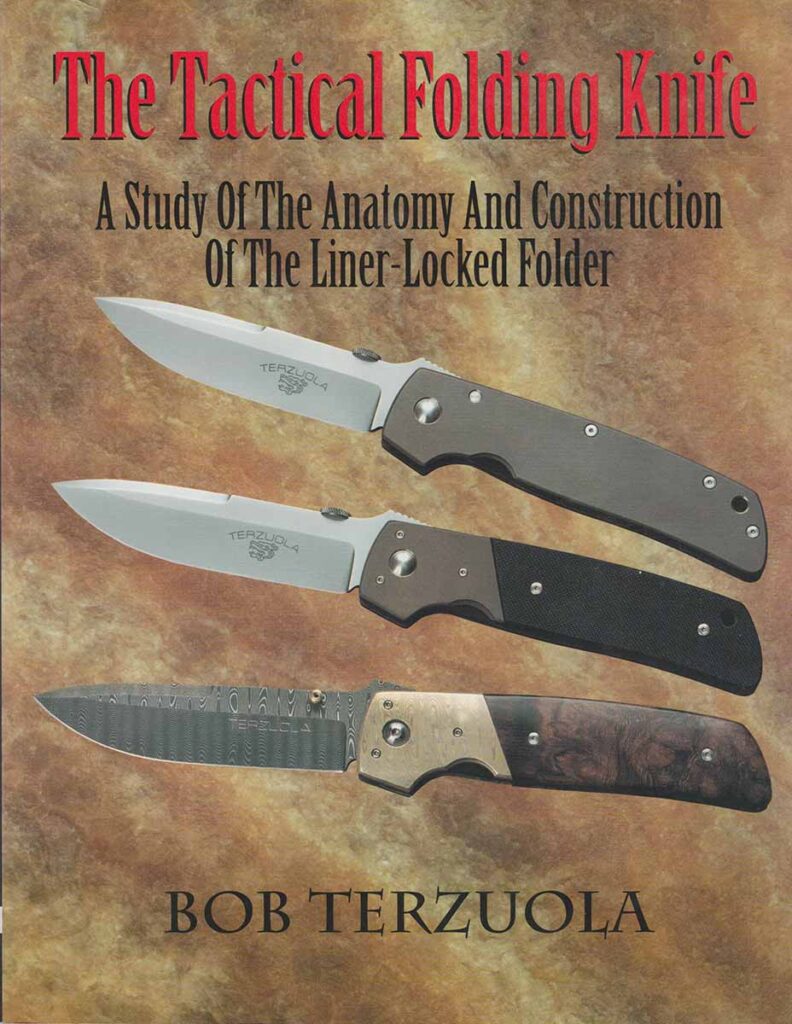
Bob reiterated Devin Thomas’s comment about the importance of the human element. “I’ve seen a lot of changes and met a lot of people and made a lot of really good friends, and had to say goodbye to some of them,” he said. “There were friends who meant a lot to me over the years, people like Bob Loveless, Carolyn Tinker, Howard Viele, Frank Centofante, Wayne Goddard, Bob Lum, Alex Collins. A lot of these names don’t mean anything to a lot of younger makers, but they all helped build the structure that we all rely on to take care of our families.”
He also addressed some in the audience in particular, including Cutlery Hall-Of-Famer Michael Walker. “He introduced me to the alchemy of the linerlock and working with titanium, which back in the mid-1980s was virtually unknown to knifemakers and now is so important not only to tactical folders but all sorts of pocketknives,” Bob noted of Michael. “And Ken Onion, who’s been a long-time friend and a guiding light … and I want to thank my children … but most of all I want to thank my wife, Susan, who has taken care of me over many years and … has been a powerhouse of the artistic critiquing of my knives, additions to design and so forth. And thanks to all of you for this honor and gathering here at the greatest knife show there is. Keep up the good work and let’s see where this winding, crazy, twisting road of surprises takes us in the craft of knifemaking.”
Steve Schwarzer
An ABS master smith, Steve Schwarzer and the ABS were meant for each other. The ABS is all about teaching and promoting the art of the forged blade, and so is Steve. “I want to say thank you to Billy Ray Hughes and the ABS that really helped me build a foundation,” he said. “They have a set of standards to follow and it really helped drive my business,” a business that includes a pioneering career in canister damascus, award-winning knives and teaching as many bladesmiths as he can how to forge blades
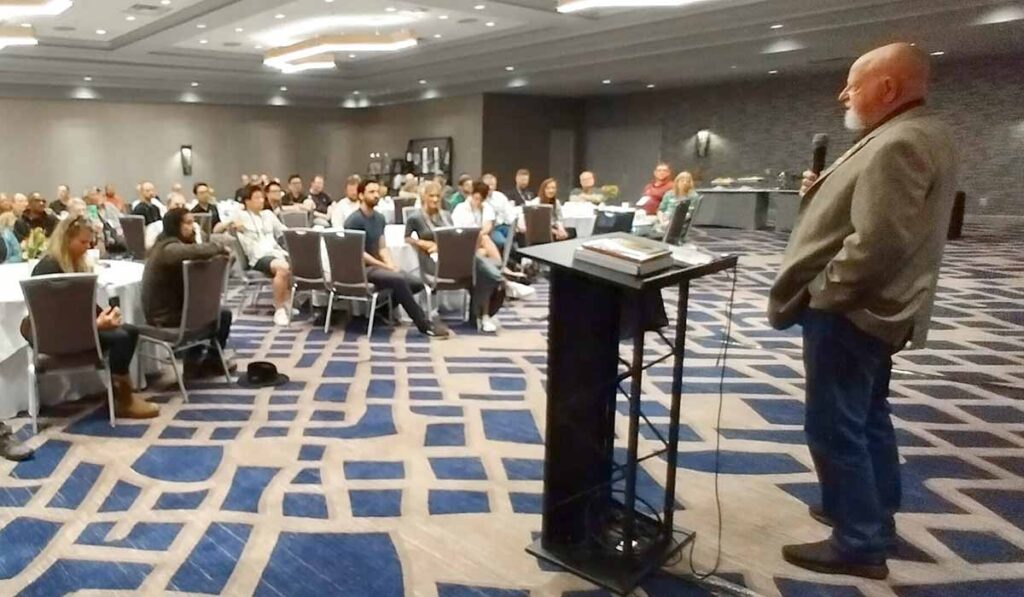
Like Devin Thomas, Steve got a taste of what would become his life’s work in junior high school when he forged his first hot steel. Not long after high school in the late 1960s, he went to work in the aircraft industry and started making “knife-shaped objects.” He called them knife-shaped objects “because we took a piece of stainless steel we found on the job somewhere with no idea how to heat treat it or what kind of steel it was, and we’d grind it to what looked like a knife and put a handle on it.”
In 1972, he moved to Florida and bought a book by Alex Bealer that had a page-and-a-half on forging knives. “When I turned that page and read it, it lit a fire that never went out,” Steve said. He made knives as a hobby and sold them to his fellow shop workers for $15 and $20 apiece. “They told me I was wonderful and I believed them,” Steve said to a chuckling audience. It was then he learned of Bobby Tyson. “He was my original teacher,” Steve said. “I loved the guy. He could make two beautiful pocketknives in a day that walked and talked. Tony Bose would’ve been proud of them.”
Tyson actually had books on making knives, a novel concept at the time. Steve visited Tyson and learned all he could. “He put me ahead five years in one weekend and that’s what I try to do with Neil Kamimura and these guys here,” Steve said, pointing to some of his students in the audience. “I surround myself with people doing great things.” It is an approach that inspires Neil.
“Steve says surround your yourself with people that know your value,” he observed. “He has helped a tremendous amount of people and everybody wants to know his tricks because he’s the wizard of steel. But for me it wasn’t his tricks of welding steel but it was the lessons I wanted to learn, such as how does he keep his passion for that many years? How did he keep his willingness to want to keep on wanting to learn?” To absorb those things from Steve, Neil noted, “is to listen to his struggles, his hardships and the balance he took to maintain such longevity in this industry.”
Meanwhile, Steve the teacher remains, and always has remained, Steve the student.
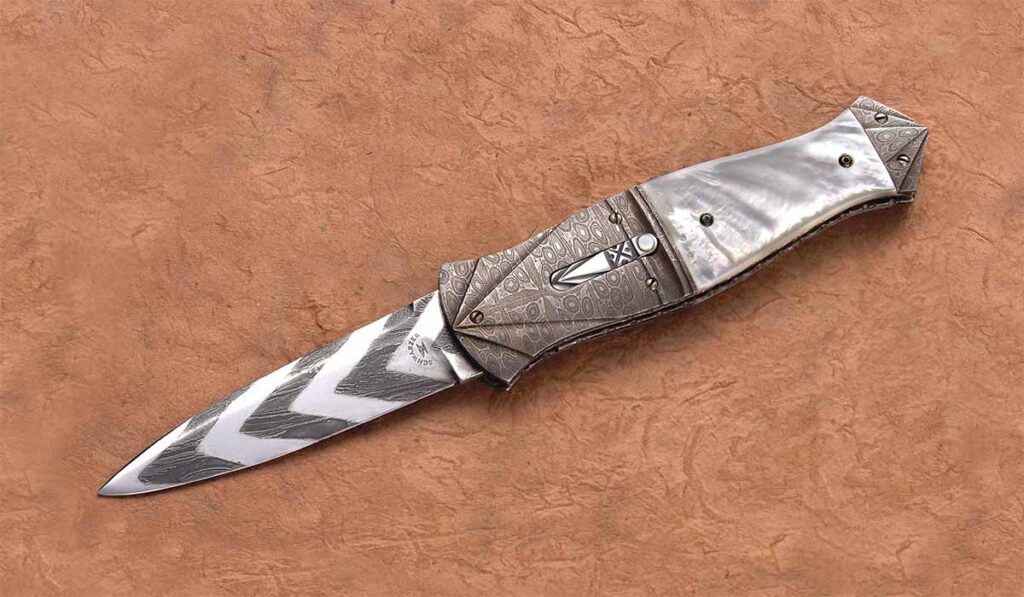
“At 75 I’m hurrying, I promise you,” he stressed. “I wake up in the morning and it’s, ‘Man, I’ve got another day. Let’s go do something!’ And that’s what I do and then [my students] explore and come back with information. So everyone you teach in this business doubles your life in the business is the way I look at it. And that’s why I love what I do.”
Neil brought it all into full focus.
“How many careers were started because of him and how many lives he’s touched, many in this room,” he mused.
“Steve Schwarzer has truly changed bladesmithing forever and I believe that … A lot of these young makers and a lot of these Instagram people, we’re nothing without people like Steve and people that have been inducted [today]. So if you don’t know Steve, you should get to know him, and if you do know Steve, you should treasure him like I do.”
Read More On BLADE Magazine And Show:
- A Look Back At BLADE Magazine Cutlery Hall of Fame® History
- That Time that BLADE Magazine was Traded for a Horse
- BLADE Show History: It All Started With Two Names
- 2023 BLADE Show Texas Factory And Custom Award Winners
 NEXT STEP: Download Your Free KNIFE GUIDE Issue of BLADE Magazine
NEXT STEP: Download Your Free KNIFE GUIDE Issue of BLADE Magazine
BLADE’s annual Knife Guide Issue features the newest knives and sharpeners, plus knife and axe reviews, knife sheaths, kit knives and a Knife Industry Directory.Get your FREE digital PDF instant download of the annual Knife Guide. No, really! We will email it to you right now when you subscribe to the BLADE email newsletter.






